VENICE
If you plan to visit Venice, don’t think that you have to stay there for a week! Venice is a small city and you can visit it in one day. If you want to visit also some museums, maybe you need two days. If you want to visit also the amazing Burano and Murano, where they make beautiful Glasses and Chandeliers, maybe you need three days but not more! Sometimes I have people that they want to stay in Venice for a week, and my question is :”WHY?”. Ok I know that Venice is beautiful and maybe for someone is the first and the last time that they can visit it but, after three days you don’t really know what you can see more.
Eating out in Venice is not complicated if you know where you have to go. Caffe Florian and Harry’s Bar are iconic places that you can try but extortionately expensive! Harry’s Bar is famous for the BELLINI, it’s unique but also expensive (more than 20 Euro per glass). Every places in Venice could be a little over price but come on, you are in Venice….
If you want to try something really Venetian, you should start with some chichetti (Venetian tapas) and a couple of Spritz Aperol (everyone’s favourite drink was invented in the Veneto). At the end of this page you’ll find some good restaurants where usually there are only people from the city.
New Fees to get in the city
What is the New Venice Entry Fee?
The Venice entry fee is a contribution imposed on selected days during High Season. The fee aims to mitigate the environmental impact of tourism and fund the maintenance and preservation of Venice’s cultural heritage and infrastructure.
When Do You Have to Pay to Visit Venice?
The entry fee costs €5 and applies to day visitors only. It is only enforced on certain days. Tickets will be required during peak hours from 8:30 am until 4 pm. The access fee is not charged from 4.00 p.m. to 8.30 a.m.
Confirmed dates when the fee will be charged.
April 25, 26, 27, 28, 29, 30 2024
May 1, 2, 3, 4, 5, 11, 12, 18, 19, 25, 26 2024
June 8, 9, 15, 16, 22, 23, 29, 30 2024
July 6, 7, 13 and 14 2024
Exemptions
Those staying overnight in Venice accommodation will not have to pay but will still need to register via the new system.
Residents of Venice and the wider Veneto region (and their relatives) will not have to pay an entry fee. People with disabilities, students enrolled to study in the city, and those visiting the city for the day for health reasons, or a sporting event or concert are also exempt.
How to Pay or Register
All visitors, including day-trippers, will need to pre-book their visit through an online booking platform.
If your clients have booked a hotel in Venice via Bedsonline please follow these steps to obtain the exception QR code:
1. Visit the official website https://cda.ve.it/en/, choose “ Request Exemption”
2. Select “I am a guest in an accommodation in Venice”, and click “Request Exemption”
3. Enter your clients arrival and departure dates.
4. In the data entry screen, use accommodation number XXXXXX and select option YYYYY as a guest of this facility.
5. Add names of other guests under “Add holder.”
6. You will receive your QR code electronically. Make sure to save a digital copy.
Compliance
Non-compliance with the Venice entry fee regulations may result in penalties for both visitors and accommodation providers, including fines and legal consequences.
Promoting Responsible Tourism
By paying the entry fee, visitors contribute to the sustainable development and preservation of Venice’s unique heritage, ensuring its beauty and charm for future generations to enjoy.
A Taste of Italy
10 Days Guided Tour
Things to do in Venice
Gondola
Experience Venice in the most Venetian way possible: via a 35-minute shared gondola ride while being serenaded. Choose between an afternoon or evening ride and then hop on the six-person gondola by a gondolier who is clad in traditional garb. Then begin the ride, as part of a group of eight different gondolas, with a singer aboard one of the boats. In addition to the song being sun to you, enjoy the sites of Venice’s main landmarks, including the grand Canal and Palazzo Barberino.
Read more about Venice Gondola Ride, Click Here
St. Mark’s Square
St. Mark’s Square (Piazza San Marco), often referred to as “the drawing room of Europe,” is one of the most famous squares in Italy. The geographic and cultural heart of Venice—with St. Mark’s Basilica and Doge’s Palace at one end, the campanile in the center, and the colonnaded arcade topped by the Procuratie palaces lining three sides—this elegant piazza is also steeped in history. Settle in at one of the many coveted café tables and watch tourists (and pigeons) pose for photos while you sip a Bellini and soak in the square’s Renaissance splendor.
St. Mark Basilica
St. Mark’s Basilica is the crown jewel of Venice, one of the most sumptuous cities in the western world. This ornate cathedral blends elements of Gothic, Byzantine, Romanesque, and Renaissance architecture—testimony to the city’s political and economic dominance that spanned centuries. Topped by soaring domes and with an interior of astonishing golden mosaics, the church is so opulent it is known as the Chiesa d’Oro, or the Golden Church. Construction began in 828, when the body of St. Mark was smuggled back to Venice from Alexandria; the church has been rebuilt, expanded, and delicately restored over the centuries.
Rialto Bridge
The Rialto Bridge was the first to span Venice’s Grand Canal (Canal Grande) between its two highest points above sea level. The original 12th-century wooden bridge was replaced in 1592 by a stone structure resting on wooden pilings—a bold design by Antonio da Ponte featuring a single central arch over the water that allow ships to pass. Today, the bridge is among Italy’s most famous, carrying an endless stream of tourists and locals across the canal while countless gondolas and vaporetto water buses pass beneath.
Doge’s Palace
The Palace of Doges is a significant historical site in Venice, with many travelers arriving to hear about the strict rule of the Venice Doges from an expert local guide. The site is most often visited on a two- to five-hour Venice tour and can be combined with a stop at St Mark’s Basilica, once the private chapel of the Doges. Inside the palace, admire the many paintings by Titian, Tintoretto, and Veronese, and climb the narrow staircases to visit the Doge’s apartments and the prison cells, as well as the ducal notary. Outside the palace is the Bridge of Sighs and the beautiful columns along the piazzetta.
The popular Secret Itineraries tour allow visitors, accompanied by a guide, into chambers of the palace not open to the general public. You’ll see the secret chancellery where the delicate work of governing was done, the secret archives, the torture room, and the cell from which the famous writer Giacomo Casanova made his escape.
The Doge’s Palace (Palazzo Ducale) is located next to St Mark’s Church in St Mark’s Square. The site is easily accessible by vaporetto (the public water taxi) on the Grand Canal or on foot.
Venice Jewish Ghetto
The Jewish ghetto is in Venice’s Cannaregio neighborhood. Take the vaporetto (water bus) to the Ponte delle Guglie stop on the Fondamenta di Cannaregio.
The Bridge of Sighs
Burano Tours
Waterborne Routes Venice
Waterborne Routes Venice
The public transportation in Venice is really expensive, Euro 7.50 for every single ride. If you want to use it, I suggest to buy the 1 day ticket Euro 20 (if you think that you are going to use the ferry more than 2 times). If you plan to stay in Venice for more than 1 day, you can buy 2 days ticket for Euro 30, 3 days ticket for Euro 40 and 7 days ticket for Euro 60.
If you need informations about how, when and prices of the Ferryboat in Venice, this is the map of the service. If you need more informations you can find everything about that on their webside, click here
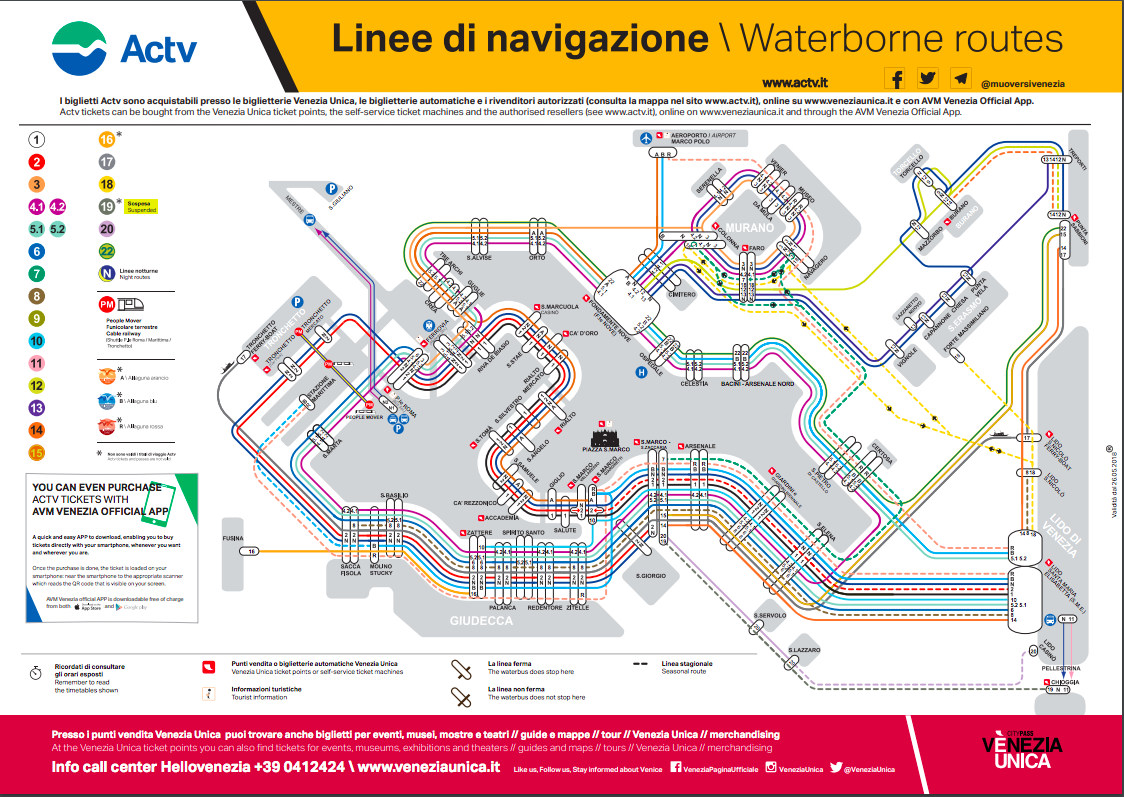
Some Ideas for Your Tours in Venice
Gondola Ride
Is not possible to buy tickets for the Gondola, the only way is to go there and pay directly to the Gondolier.
I advise to use the Venice Gondolier Association that is located in front of S.Lorenzo Column
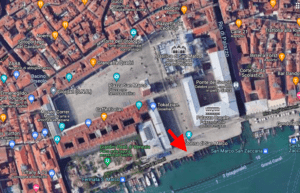
Walking Tour & Gondola Ride
- Venice tour including a gondola ride and walking tour
- Take a gondola ride down the Grand Canal of Venice!
- Enjoy a walking tour of Venice, passing sights that the tourist maps miss
- Stroll through narrow back streets and alleyways while learning about Venetian history
St. Mark Basilica & Doge Palace
Delve into Venetian history on this tour that showcases two of the city’s most iconic structures and sheds light on the stories behind them both. Enjoy skip-the-line access to both popular attractions. Your first stop is legendary St. Mark’s Basilica. Wander around the mosaic-covered interior and Byzantine treasures while a local guide fills you in on how this collection came to be. Then continue to the Doge’s Palace to explore the former political heart of Venice.
- Skip-the-line access and tours of St. Mark’s Basilica and Doge’s Palace
- Explore two of the floating city’s most iconic sites and learn the stories behind them
- Visit the opulent apartments and the Hall of the Great Council at Doge’s Palace with a guide
- Take a walk over the Bridge of Sighs
- Enjoy special access to the first floor terrace of St. Mark’s for panoramic views over the city
Time 3 hours (Approx.)
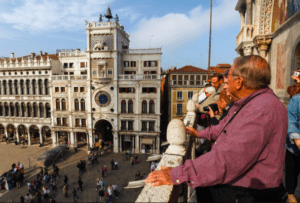
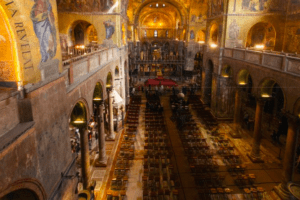
The Real Hidden Venice
Discover the real Secret Venice with a native Venetian guide!
The experience to live the uniqueness of the most authentic local districts.
From Cannaregio, admiring its small canals and millenary legends, the tour will take you back in 1400s, learning the stories of the Venetian Republic, full of secrets and mysteries.
During this exciting walk you will breathe a 100% local atmosphere, out of the beaten tracks, to admire the real life of Venice with its locals and crafts.
The experience will arrive up to Rialto bridge where your guide will show the old trade center from completely a different perspective!
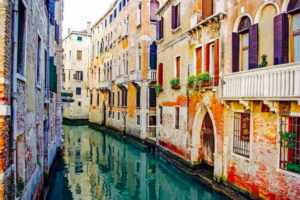
Last but not least, an insightful exploration of San Polo where the oldest “mascareri” (creators of Carnival masks) are still working following the tradition of centuries ago. Histories, Legends and Secrets.. from the Venetian eyes!
2 hours (Approx.)
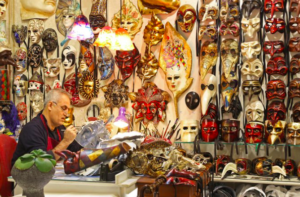
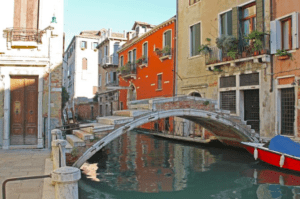
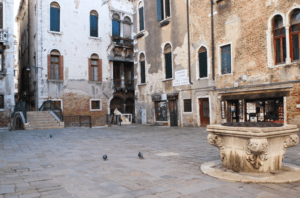

Emanuele Leoni Dickinson
(Pac&Go Founder)
Independent Travel Agent
in collaboration with
American Travel Bureau, Lancaster CA (USA)
AR/IATA #05505183
Business License 07723648
